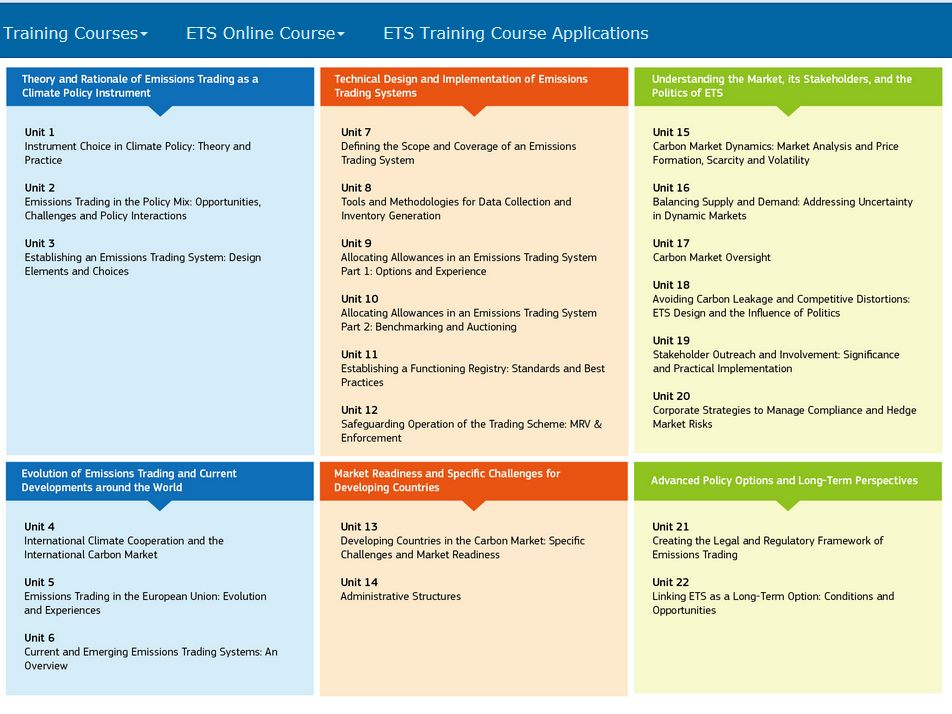Emissions Trading in China and Europe: Taking Stock, Thinking Ahead, Looking Beyond
- Event
- Date
-
- Location
- Shenzhen, China
On 13 December 2017 the China Emissions Exchange and the European Commission hosted a conference in Shenzhen on emissions trading in China and the EU. The conference was organized by Ecologic Institute. The event brought together experts from the world's largest emissions trading scheme, the EU ETS, and China's future major emissions trading scheme. The conference took stock of what emissions trading in the EU and China have achieved so far and what lessons can be drawn from it. Moreover, the event dealt with how emissions trading can contribute to mastering future climate policy challenges. The presentation slides are available online.
Conference programme, with links to the presentation slides:
9.00 – 9.30 Opening and Keynotes
Welcome: CAI Yu, Shenzhen Development and Reform Commission
Keynote: Beatriz YORDI, European Commission
Keynote: TANG Jie, Harbin Institute of Technology
9.30 – 10.30 A. Taking Stock: Emission Trading and Cost-Effective Emission Reductions
Where do China and the EU stand in terms of ETS implementation – what has been achieved so far, what lessons have we learnt? Which emission reductions have been achieved, and at what cost? What are differences and commonalities between China and Europe?
- DUAN Maosheng, Tsinghua University
- Franzjosef SCHAFHAUSEN
- Questions & Discussion
Moderator: Benjamin GÖRLACH, Ecologic Institute
11.00 – 12.15 B. Making ETS work: Essential Building Blocks of an ETS
What lessons have we learnt for creating the foundations for an ETS to work well and to deliver – building the data base, establishing solid MRV rules and proce-dures, creating the legal and administrative framework, letting the market for allow-ances develop and mature?
- ZHANG Xin, National Centre for Climate Change Strategy and International Cooperation
- Dian PHYLIPSEN, SQ Consult
- Questions & Discussion
Moderator: QIAN Guoqiang, Sino-Carbon
13.30 – 14.30 C. Working Together: International Cooperation on ETS Implementation
How can countries work together to get ETS implemented, what are the pros-pects for an eventual linking of ETS? What are the most useful fora and formats for such cooperation – from bilateral cooperation, to intergovernmental bodies, to international fora such as the UNFCCC or the G20?
- FU Sha, National Centre for Climate Change Strategy and International Cooperation
- Femke DE JONG, Carbon Market Watch
- Questions & Discussion
Moderator: Johannes ENZMANN, European Commission
14.30 – 15.30 D. Thinking Ahead: The Role of ETS in the Transition to a Low-Carbon Economy
How does ETS fit into the big picture of low-carbon transformation: How should the broader regulatory framework be aligned to reap synergies between ETS implementation and air quality protection or power sector reform, and to exploit the full potential of an ETS? How can the ETS be part of a broader strategy for innovation, investment and competitiveness?
- ZHANG Junjie, Duke Kunshan University
- Andrew PRAG, IEA
- Questions & Discussion
Moderator: QIAN Guoqiang, Sino-Carbon
16.00 – 17.15 E. Looking Beyond: How do we move up along the Ladder of ETS, Making Markets Work and Mobilising Low-Carbon Finance, Towards a Low Carbon Economy? (Panel Discussion)
How do we get to carbon prices that are high enough, soon enough, covering enough of the global economy, to deliver the necessary changes in our econo-mies?
- DUAN Maosheng, Tsinghua University
- GE Xing’an, China Emissions Exchange
- XU Hongping, Industrial Bank of China
- Franzjosef SCHAFHAUSEN
- Vicky POLLARD, European Commission
Moderator: Matthias DUWE, Ecologic Institute
17.15 – 17.30 Close of the Conference, Final Remarks
Beatriz YORDI, European Commission
GE Xing’an, China Emissions Exchange



